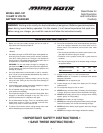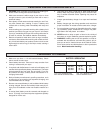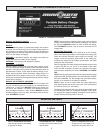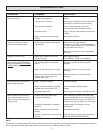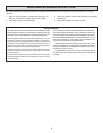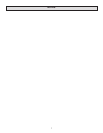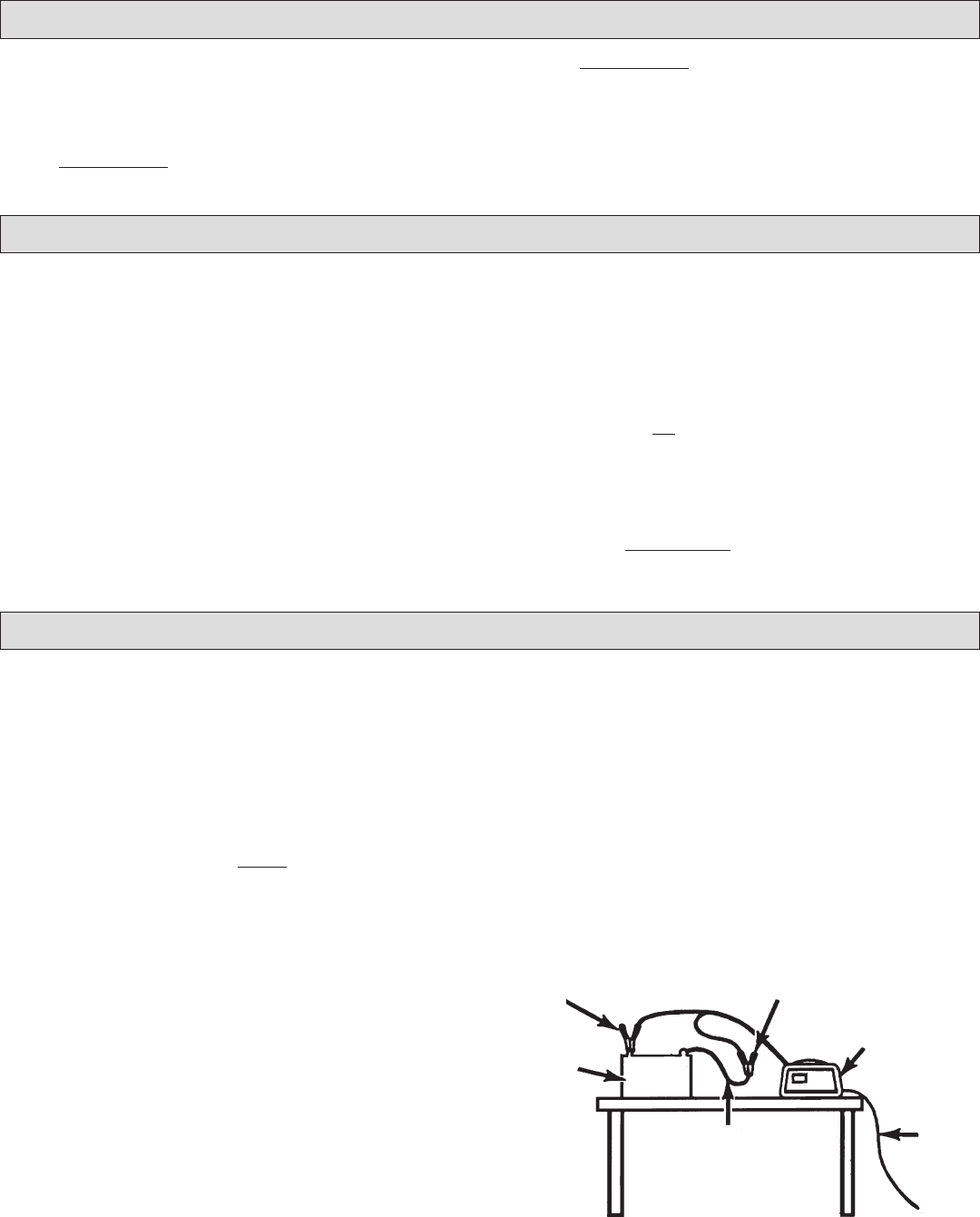
4
This battery charger is equipped with a self-resetting circuit
breaker. This device protects the charger from temporary over-
loads. In the event of an overload, the circuit breaker will trip
open and after a short cooling off period will reset automatically.
This process is known as cycling and can be recognized by an
audible
clicking sound.
NOTE:
Clicking sound is normal. Wait until charger automati-
cally resets itself.
CAUTION: Persistent clicking (more than 30 minutes) may in-
dicate reverse connection or shorted battery cells. (See
TROUBLESHOOTING)
Three basic types of lead-acid batteries can be given a charge with this charger: (1) Conventional and Low Maintenance, (2) Mainte-
nance Free, (3) Deep Cycle / Marine.
Conventional and Low Maintenance Batteries. These are the
antimony/lead batteries. Conventional/Low Maintenance batter-
ies require periodic addition of water to the acid solution (elec-
trolyte). Additional water may be added by removing the filler
caps located on the top of the battery.
IMPORTANT: When antimony is known to be one of the mate-
rials used in the battery's construction, that battery is a Low
Maintenance/Conventional type.
CAUTION: Some Low Maintenance batteries have a relatively
smooth top without any apparent battery filler caps. If, however,
the battery manufacturer/distributor recommends periodic check-
ing of electrolyte level and provides access to the battery for
water additions, the battery is probably a Low Maintenance/
Conventional type.
Maintenance Free Batteries. These are calcium/lead batteries
and normally do
not require water additions. Therefore, filler
caps have been removed from the battery surface. These bat-
teries will have a smooth or sealed appearance.
Deep Cycle Batteries. These heavy duty batteries are used in
boats, construction equipment, sump pumps, etc. They are nor-
mally marked
DEEP CYCLE on the outside of the case.
When charging battery, take care to determine the battery type.
To reduce risk of a spark near battery, follow these steps.
WARNING: A spark near battery may cause battery explosion.
WARNING: When removing battery from vehicle or boat, dis-
connect grounded pole first. When disconnecting, make sure
the engine/motor and all accessories are off, so as not to cause
an arc.
(NOTE: BOAT BATTERIES
MUST BE REMOVED AND
CHARGED ON SHORE. (TO SAFELY CHARGE ON BOARD
REQUIRES SPECIAL EQUIPMENT ESPECIALLY DESIGNED
AND UL LISTED FOR MARINE USE. THIS CHARGER IS
NOT WATER RESISTANT AND SHOULD NOT BE EXPOSED
TO WET CONDITIONS.)
WARNING: When reinstalling battery, attach the ground post
first.
1. Check polarity of battery posts. Battery case will be marked
by each post: POSITIVE (POS, P, +) and NEGATIVE (NEG,
N, -). NOTE: The positive battery post usually has a larger
diameter than the negative post.
2. Attach a 24-inch long (or longer) 6-gauge (AWG) insu-
lated battery cable to NEGATIVE (NEG, N, -) battery post.
3. Connect POSITIVE (RED) charger clip to POSITIVE (POS,
P, +) post battery. Rock clip back and forth to make good
connection.
4. Position yourself and free end of 24 inch cable as far away
from battery as possible. Then connect NEGATIVE (BLACK)
charger clip to free end of cable. WARNING: Do not face
CIRCUIT BREAKER
BATTERY TYPES
OPERATING INSTRUCTIONS: CHARGING BATTERY OUT OF THE VEHICLE
battery when making final connection. Rock clip back and
forth to make a good connection.
FIGURE 7 shows the connection.
5. Plug charger AC cord into 120 volt grounded outlet.
6. Turn switch from off to on.
7. When battery is fully charged, unplug charger from AC power
source.
8. When battery is fully charged and charger is unplugged,
(1) remove clip from end of Negative end of cable, and (2)
remove clip from Positive battery post, in that order.
9. Clean and store battery charger.
BATTERY
POSITIVE
NEGATIVE
24", 6 GAUGE
CABLE
+-
BATTERY CHARGER
FIGURE 7 CONNECT NEGATIVE BATTERY CLIP
TO 24 INCH CABLE END
POWER
CORD
TO GROUNDED
POWER OUTLET



